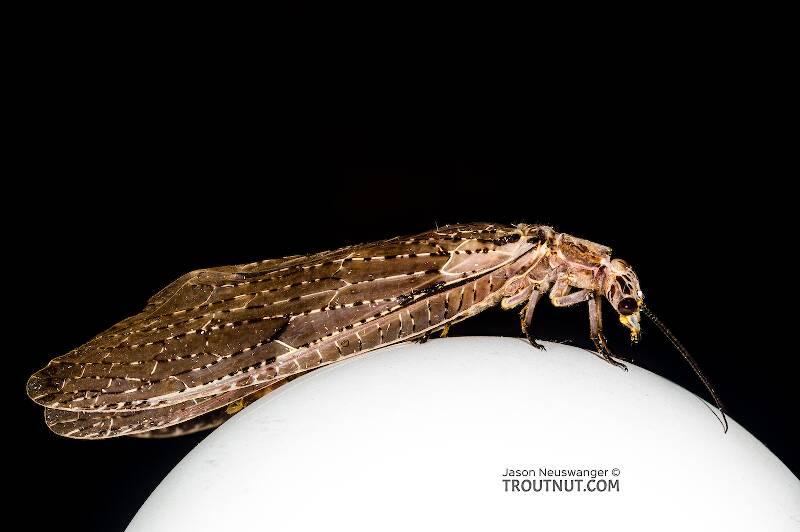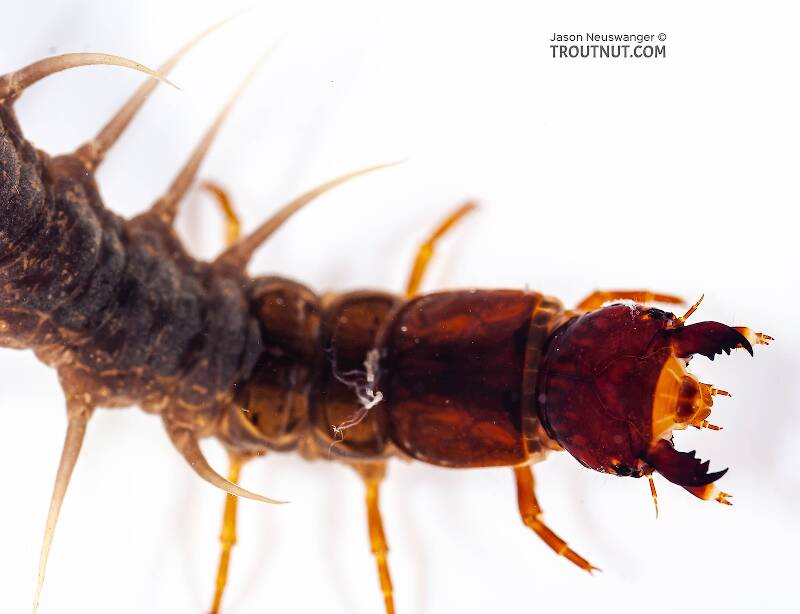
Hex Mayflies
Hexagenia limbata
The famous nocturnal Hex hatch of the Midwest (and a few other lucky locations) stirs to the surface mythically large brown trout that only touch streamers for the rest of the year.
Featured on the forum

This one seems to lead to Couplet 35 of the Key to Genera of Perlodidae Nymphs and the genus Isoperla, but I'm skeptical that's correct based on the general look. I need to get it under the microscope to review several choices in the key, and it'll probably end up a different Perlodidae.

Troutnut is a project started in 2003 by salmonid ecologist Jason "Troutnut" Neuswanger to help anglers and
fly tyers unabashedly embrace the entomological side of the sport. Learn more about Troutnut or
support the project for an enhanced experience here.
Hellgrammites
Hellgrammites are the fearsome predatory larvae of the dobsonflies. Unlike mayflies, caddisflies, and stoneflies, their life cycle does not include specific points of vulnerability, but the larvae end up in the drift often enough to be important to trout. (Note: Some would say that technically only larvae of the Corydalus genus are hellgrammites, but anglers widely use the term for all larvae in the family.)
This common name refers to only one family. Click its scientific name to learn more.
Insect Family Corydalidae
These are often called Hellgrammites.
Hellgrammites are the vicious larvae of the Dobsonflies, some of the only trout stream insects which pose a biting threat to the angler. The pincers of the adult are even more frightening that the larva's, and they're aggressive enough to use them once in a while.
This family's life cycle does not create good dry fly opportunities, but the larvae may be eaten by trout year-round. They are a secret told only by stomach samples of well-fed trout.
This family's life cycle does not create good dry fly opportunities, but the larvae may be eaten by trout year-round. They are a secret told only by stomach samples of well-fed trout.
See 7 more specimens...



